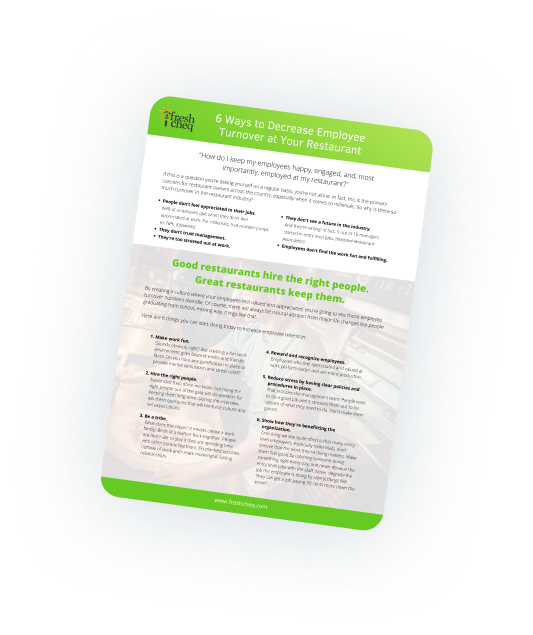Restaurants are more wreckful than restful. 91,800 injuries and illnesses occurred amongst American restaurant employees in 2018.
This number does not account for injuries and illnesses amongst customers. Yet it suggests how difficult it can be to ensure safety inside restaurants.
What laws do you have to follow for restaurant safety? What do you have to do to keep your food from sickening your customers? What are some other threats to employee and customer safety?
Answer these questions and you can allow your employees to rest easy after working their shifts. Here is your quick guide.
Read Your Local Health and Safety Codes
Before you develop a restaurant safety program, you need to think about the law. Study the health and safety guidelines of your municipality and state. Each state has its own guidelines, though many laws overlap with each other.
Federal laws are also important to understand, though most laws affect suppliers and major corporations. Read through them and talk to a lawyer about what they mean.
Err on the side of caution whenever possible. Following laws may be inconvenient, but breaking laws can shut your business down or damage your reputation.
Prevent Cross-Contamination
Food safety is extremely difficult for several reasons. Germs in meat and eggs can contaminate produce and vice versa.
Store foods in different compartments of your refrigerator and freezer. You can label one compartment for meat and another for vegetables.
You should do something similar for cutting boards and workstations. Bacteria can travel across counters and stay on knives and utensils. Prepare meat and vegetables in separate locations using separate tools whenever possible.
Keep in mind that your hands can carry bacteria to your food as well. Wash your hands using hot water and anti-bacterial soap after you touch raw meat or many pieces of produce.
Make sure you wash fruits and vegetables before you cook with them. Dry them off with paper towels that you then throw away.
Follow good tips to clean and sanitize your restaurant. It is not enough to clean your countertops and knives. You need to allow sanitizer to dry on your surfaces and you need to disinfect high-touch objects like doorknobs.
Keep an Eye Out for Food Recalls
Food recalls can occur at any moment. You should visit the websites of institutions like the FDA and see when recalls are happening.
If you are about to order food, get information from your suppliers about what exactly you are getting. Adjust your orders and find alternatives during recalls.
If you have recalled food in your restaurant, throw it out right away. Inform your customers that you may have served contaminated food and offer a refund. Being transparent about your actions will increase your legitimacy as well as promote customer safety.
It is okay to order from a supplier or company that has had recalls in the past. Examine what happened and see what they have done to improve their operations. If they have not made comprehensive changes, you should not order from them.
Store Food Properly
Storing produce and meat separately is one part of proper food storage. You also need to find the right containers for your food. There should be enough room to accommodate the food without damaging it.
Put labels on the containers so everyone knows what they contain. It is not enough to just write "chicken." Write "three chicken breasts" or "one pound of chicken legs" to provide more accurate information.
You should also write arrival and best-before dates on your containers. Do not use any food after the best-before date has passed. If you are using prepared foods, you should write when the food was prepared.
Practice Fire Safety
When people think about restaurant safety, they often think about food safety. But fires can be threats to you and your employees, even small ones. A burn on someone's finger can take them out of the restaurant for days.
Assess the different fire threats in your business. Cooking equipment is your main cause of fires, but you may need to think about lighting and wiring.
Have your employees practice putting out different fires. Grease fires should be smothered with lids or pans. Fire extinguishers should be available, yet employees should use them only to put out major fires.
Respond to Dangerous Situations
Your employees can get injured in other ways besides burns. Falls and slips are very common, especially in crowded kitchens. Grease can splash into workers' eyes and knives can cut someone.
Ask your employees to wear slip-resistant shoes that grip the floor. You can also place grease-resistant floor mats on the ground around cooking areas.
Install an eye-washing sink for employees to use whenever they get debris in their eyes. You should also have first aid kits on standby at every workstation.
Do not hesitate after an employee gets injured. Someone who cuts themselves needs to have a bandage right away. You should help them control the bleeding before letting them return to work, and you should check in with them to see if they are okay.
Work Hard to Ensure Safety
You can ensure safety with some steps. Read all safety laws that affect your restaurant.
Food safety is complicated. You need to avoid cross-contamination, but you also need to avoid recalls and preserve food so it doesn't spoil. Be diligent with your labeling and throw away expired food.
You must be attentive to fire safety, responding to flames in different ways depending on the situation. Prioritize first aid and allow employees to stop working so they can care for their health.
Get all the tools you need for safety. FreshCheq makes monitoring your food easy. Get a demo today.



